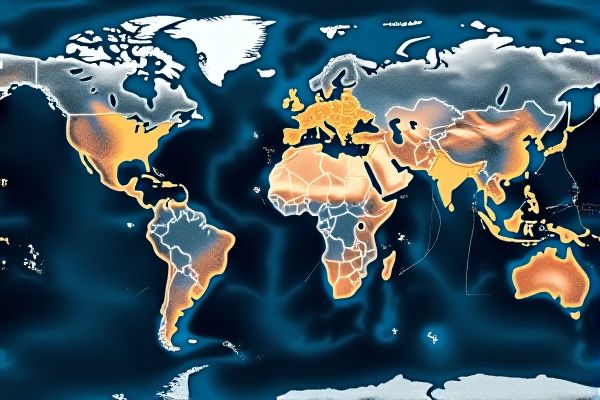
AI enhances oceanographic research by processing vast amounts of data from satellite imagery, buoys, and underwater sensors. Machine learning algorithms can identify patterns and anomalies in ocean currents, temperature, and marine life populations, helping to predict phenomena like climate change effects and extreme weather events. Autonomous underwater vehicles equipped with AI capabilities conduct real-time monitoring, mapping, and data collection in previously inaccessible regions. The integration of AI tools enables researchers to make more informed decisions regarding marine conservation and resource management.
AI usage in oceanography
Autonomous Underwater Vehicles (AUVs)
AI implementation in oceanography can enhance data collection and analysis. Autonomous Underwater Vehicles (AUVs) equipped with AI algorithms can efficiently map ocean floors and monitor marine ecosystems. This technology allows for real-time decision-making, optimizing the routes taken for data gathering. Increased accuracy and efficiency in oceanographic research could lead to better understanding of climate change impact on oceanic systems.
Marine Species Identification
AI technology has the potential to enhance marine species identification by analyzing vast amounts of environmental data. For instance, machine learning algorithms can recognize patterns in underwater images to classify species more accurately than traditional methods. This capability could improve conservation efforts by enabling researchers at institutions like the Scripps Institution of Oceanography to monitor biodiversity changes in real-time. Moreover, the efficiency gained from AI systems may lead to more precise ecological assessments, providing a clearer understanding of marine ecosystems.
Ocean Current Prediction Models
AI's implementation in oceanography significantly enhances the accuracy of ocean current prediction models. By analyzing vast datasets, AI can identify patterns that traditional methods may overlook, improving forecasting precision. Institutions like the University of Miami utilize machine learning algorithms to enhance real-time data assimilation for better predictions. This advancement opens up possibilities for improved navigation, climate modeling, and marine ecosystem management.
Coral Reef Health Monitoring
AI can enhance coral reef health monitoring by analyzing underwater images to detect changes in coral populations. For instance, researchers at a university may deploy machine learning algorithms to assess reef biodiversity. This technology offers the chance to identify stress factors affecting coral reefs, such as temperature fluctuations or pollution levels. As a result, early detection enables timely conservation efforts, potentially improving overall reef resilience.
Automated Acoustic Monitoring
AI usage in oceanography, particularly in Automated Acoustic Monitoring, can enhance the detection and analysis of marine life sounds. This technology offers a chance to identify species presence, behavior, and even population dynamics with greater accuracy. For example, institutions like the Scripps Institution of Oceanography might leverage these advancements to improve their research methodologies. The possibility of real-time data collection can significantly benefit conservation efforts and management strategies.
Enhanced Weather Forecasting
AI usage in oceanography can improve the accuracy of weather forecasting models by analyzing vast amounts of data from ocean sensors. This technology allows for better predictions related to ocean currents and temperature variations, which are crucial for understanding weather patterns. For example, institutions like the National Oceanic and Atmospheric Administration (NOAA) leverage AI to enhance their forecasting capabilities. The potential advantages include more timely warnings for severe weather events and improved resource management in coastal areas.
Deep-Sea Exploration Innovations
AI technology offers significant advantages in oceanography by improving the analysis of vast datasets collected from deep-sea explorations. For example, machine learning algorithms can process images and sonar data to identify marine species and underwater structures more efficiently. The integration of AI in research conducted by institutions like the Ocean Exploration Trust can enhance the accuracy of mapping ocean floors and understanding marine ecosystems. Such advancements increase the potential for discovering new resources and fostering sustainable practices in ocean management.
Ocean Pollution Tracking
AI applications in oceanography can enhance the tracking of ocean pollution by analyzing large datasets from satellite imagery and marine sensors. For instance, using AI algorithms, researchers can identify pollution hotspots, making it easier to allocate resources for cleanup efforts. The possibility of predicting the spread of pollutants offers a strategic advantage in managing marine ecosystems effectively. Institutions like NOAA are increasingly leveraging AI technologies to improve the accuracy of their environmental assessments.
Climate Change Impact Analysis
AI can significantly enhance oceanography by analyzing vast datasets from satellite imagery and ocean buoys, providing insights into marine ecosystems. For example, large-scale models can predict changes in ocean temperatures, facilitating better climate change impact analyses. The chance to optimize resource management in fisheries can lead to more sustainable practices. Institutions like NOAA are exploring AI applications to improve data accuracy and inform policy decisions on climate adaptation.
Fisheries Management Optimization
AI can enhance oceanography by analyzing vast datasets related to ocean currents, temperature, and marine life behavior. For instance, Fisheries Management Optimization could benefit from predictive models that identify the best times to fish and the locations of fish populations. This technology may lead to more sustainable fishing practices by minimizing overfishing and allowing ecosystems to recover. The potential to improve resource management not only supports industry growth but also promotes environmental conservation efforts.
 techknowy.com
techknowy.com